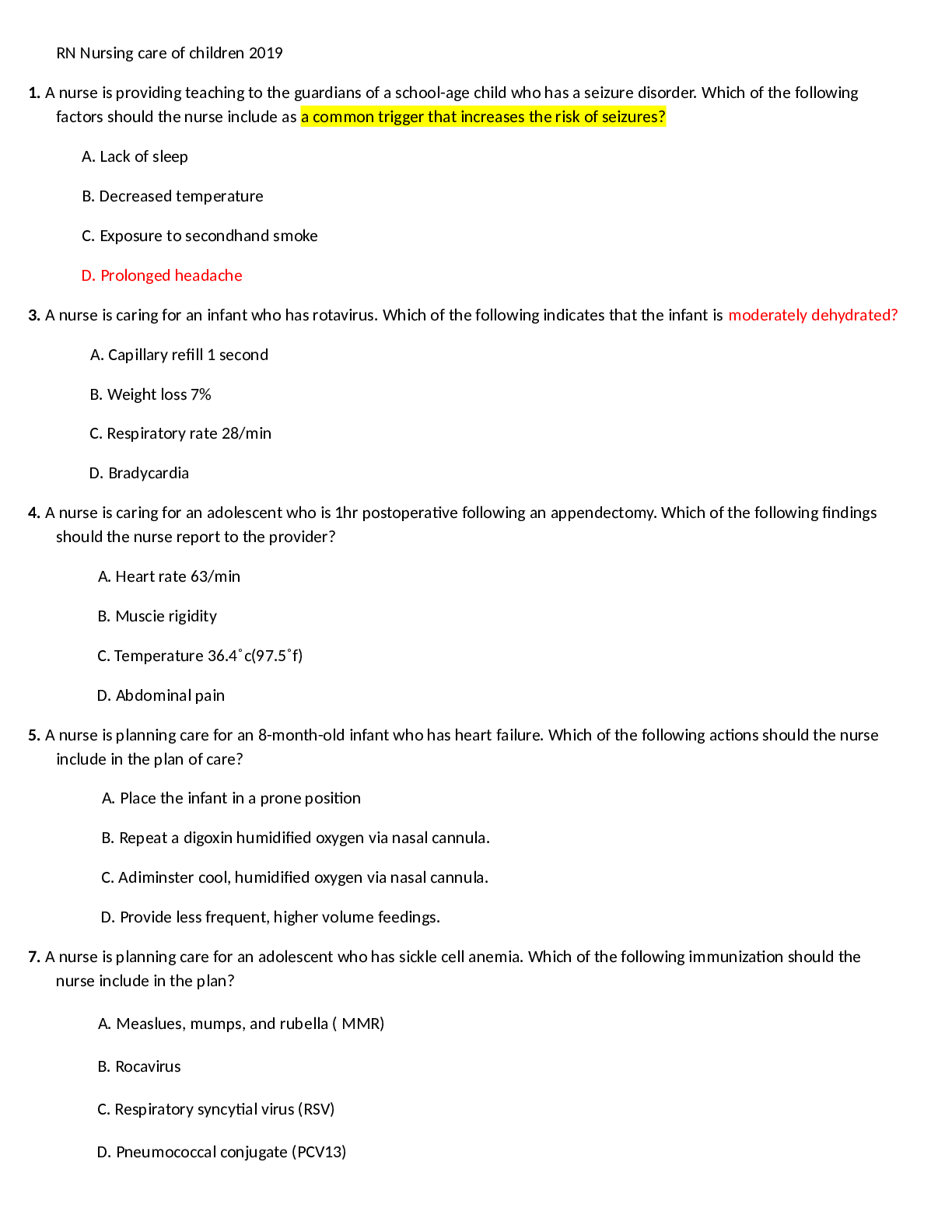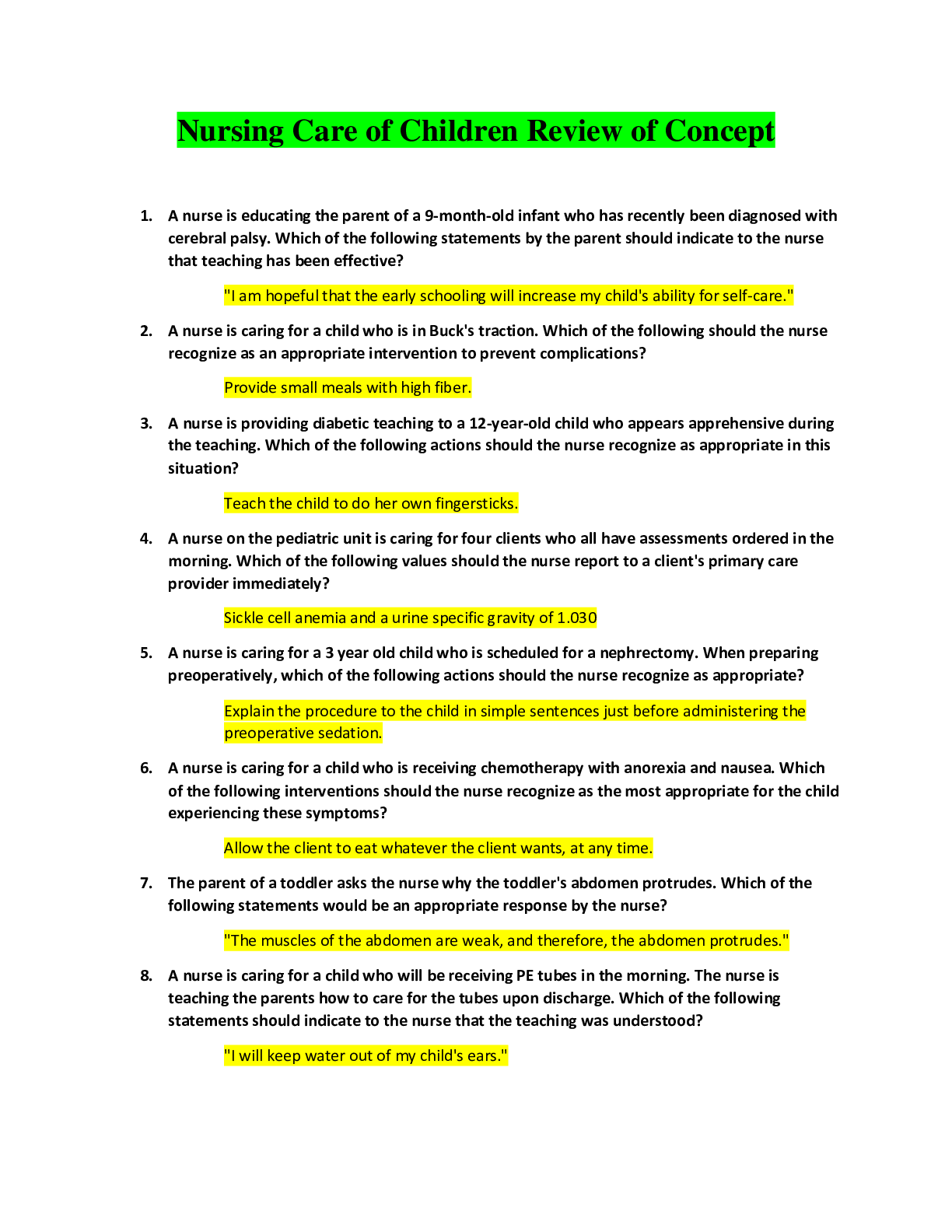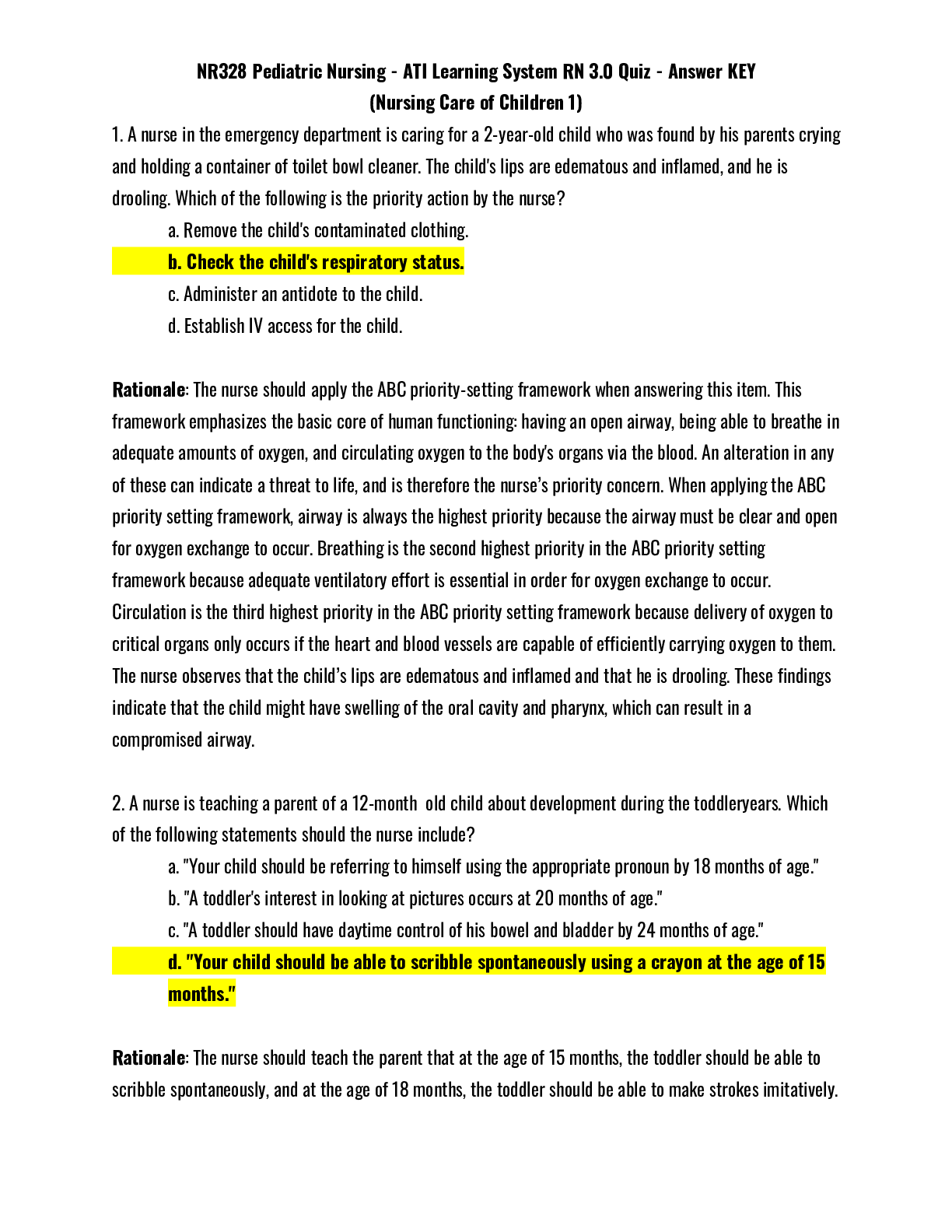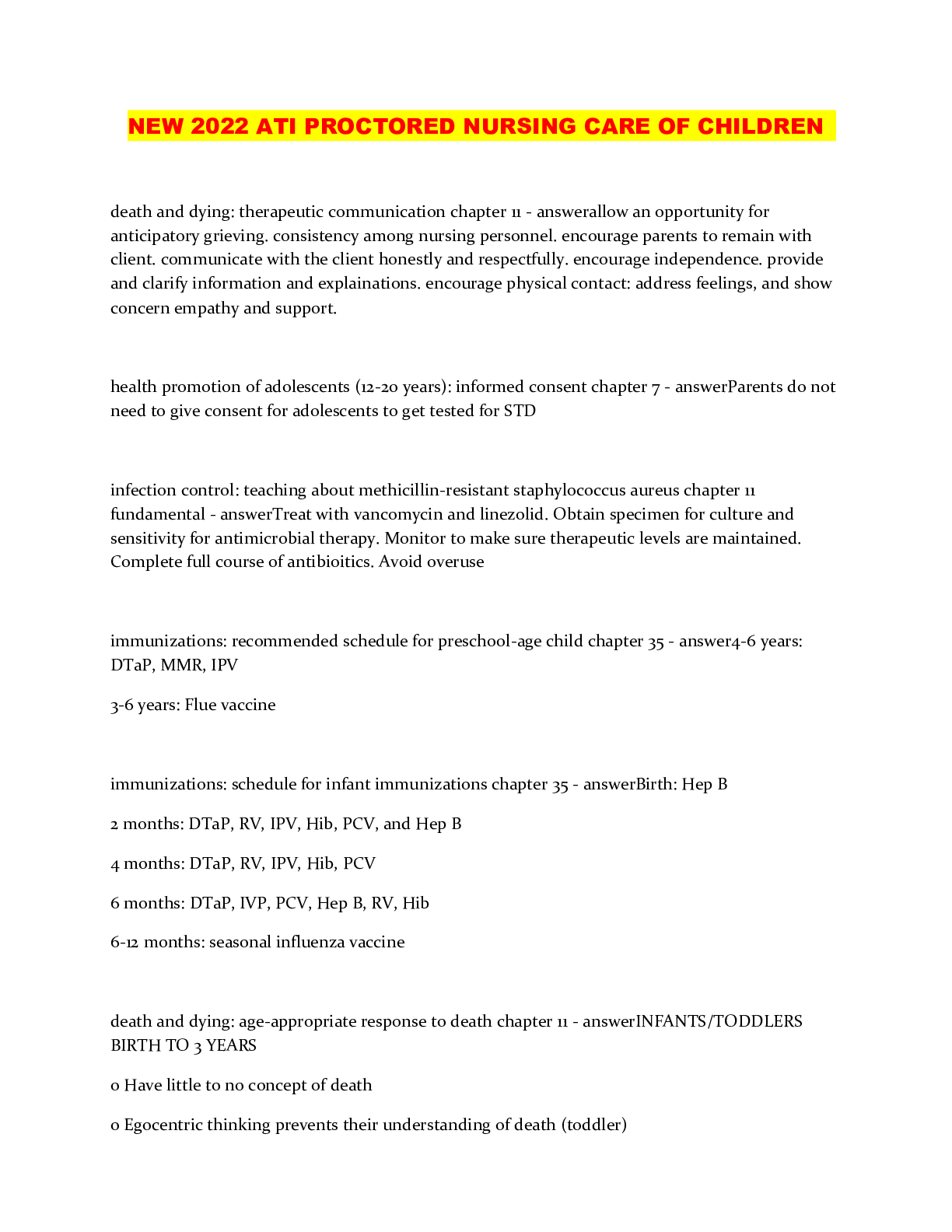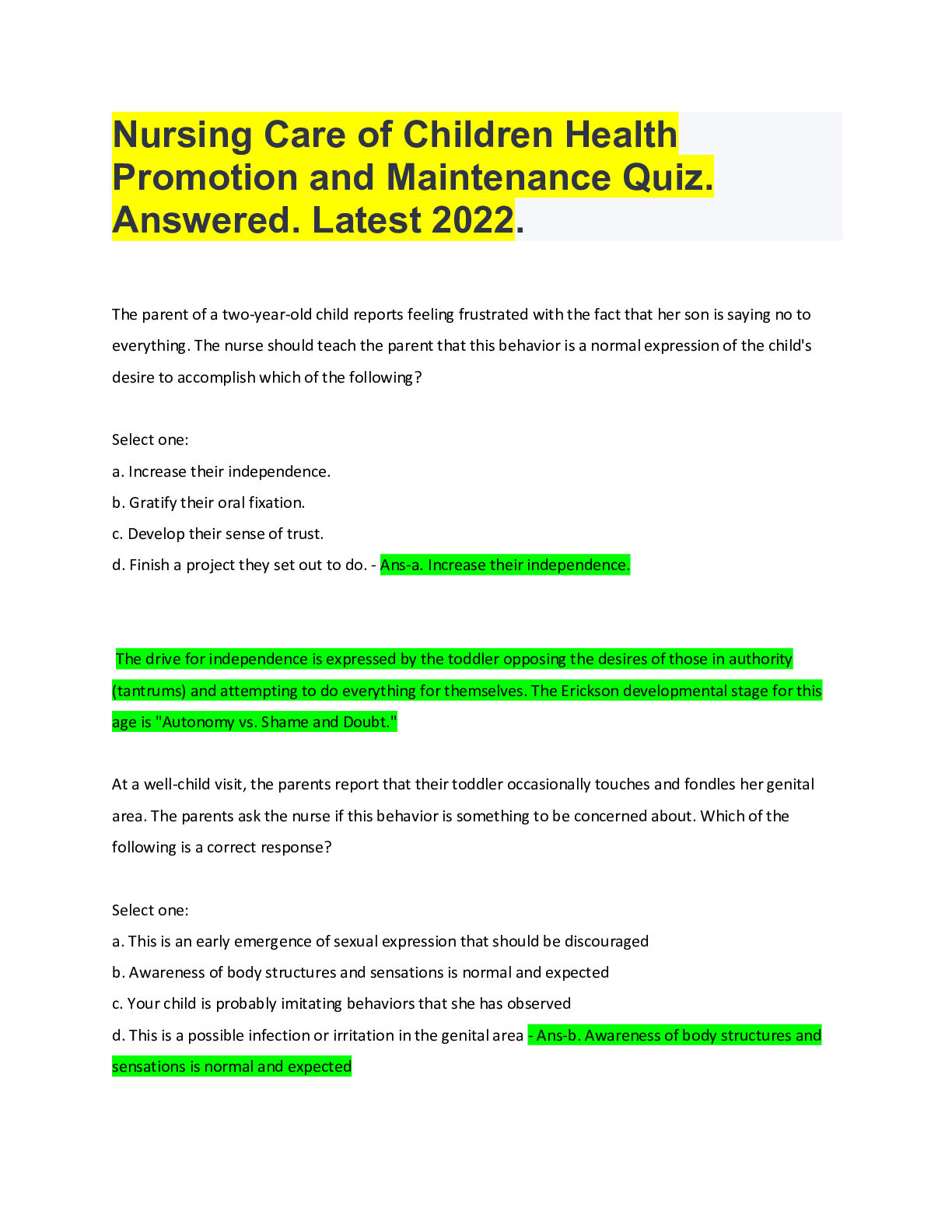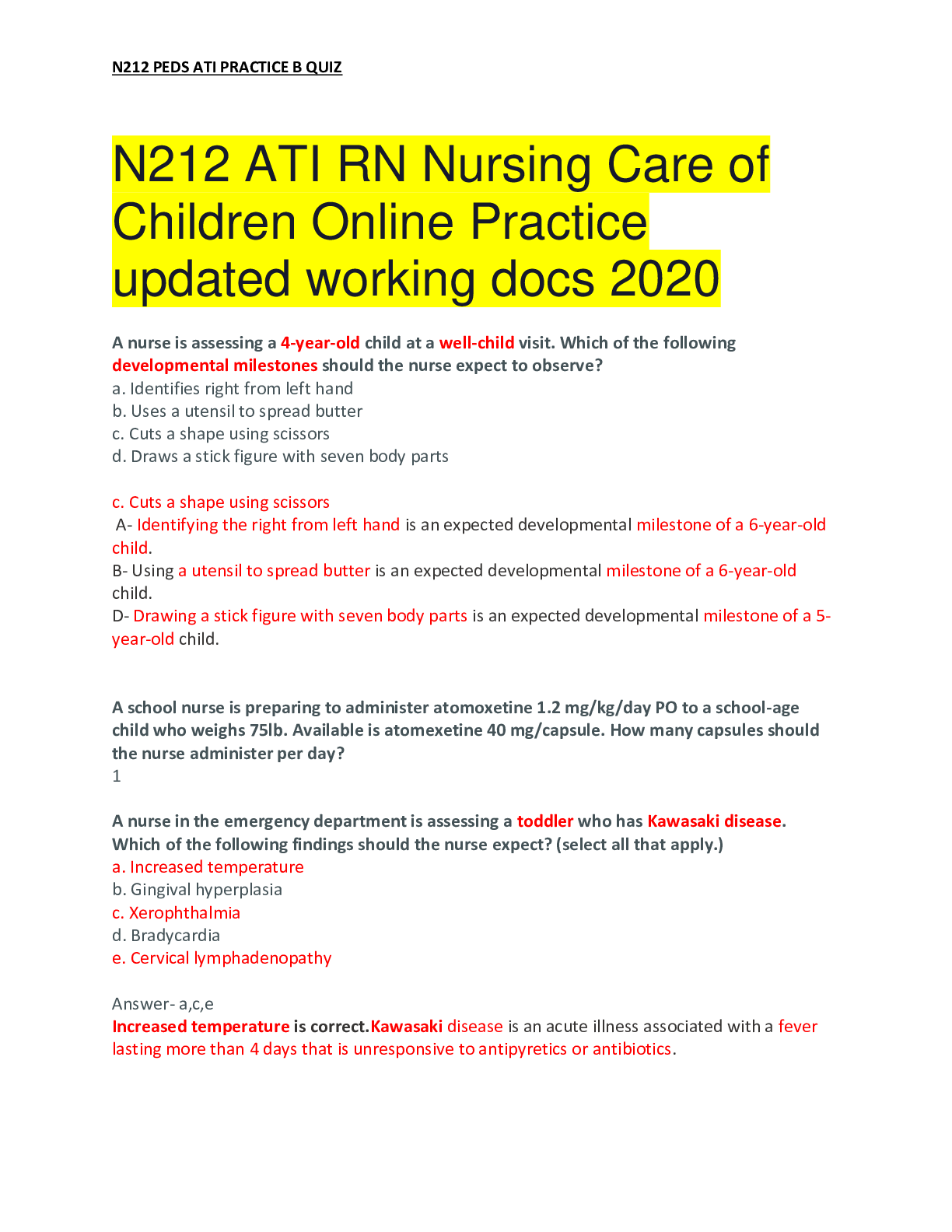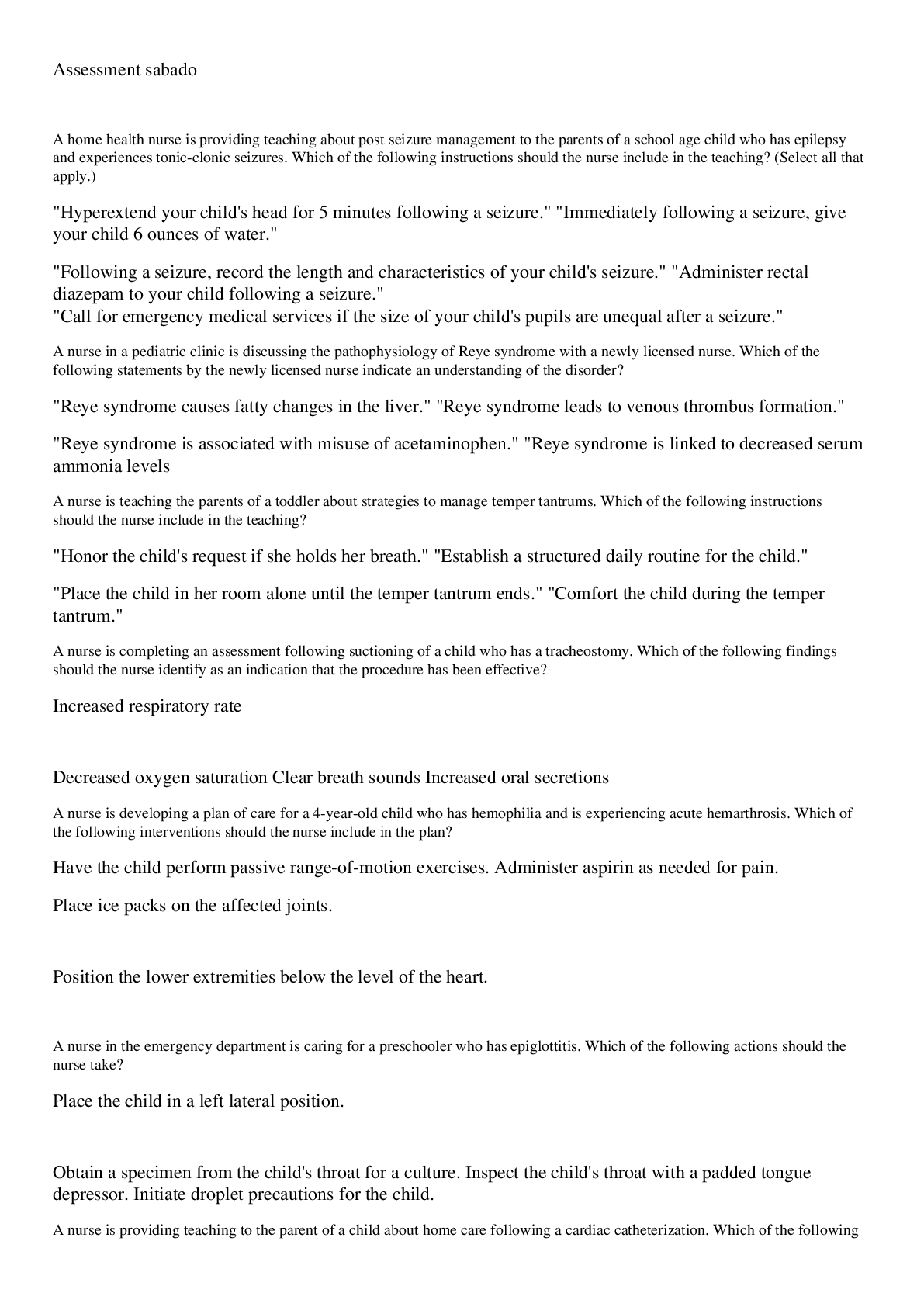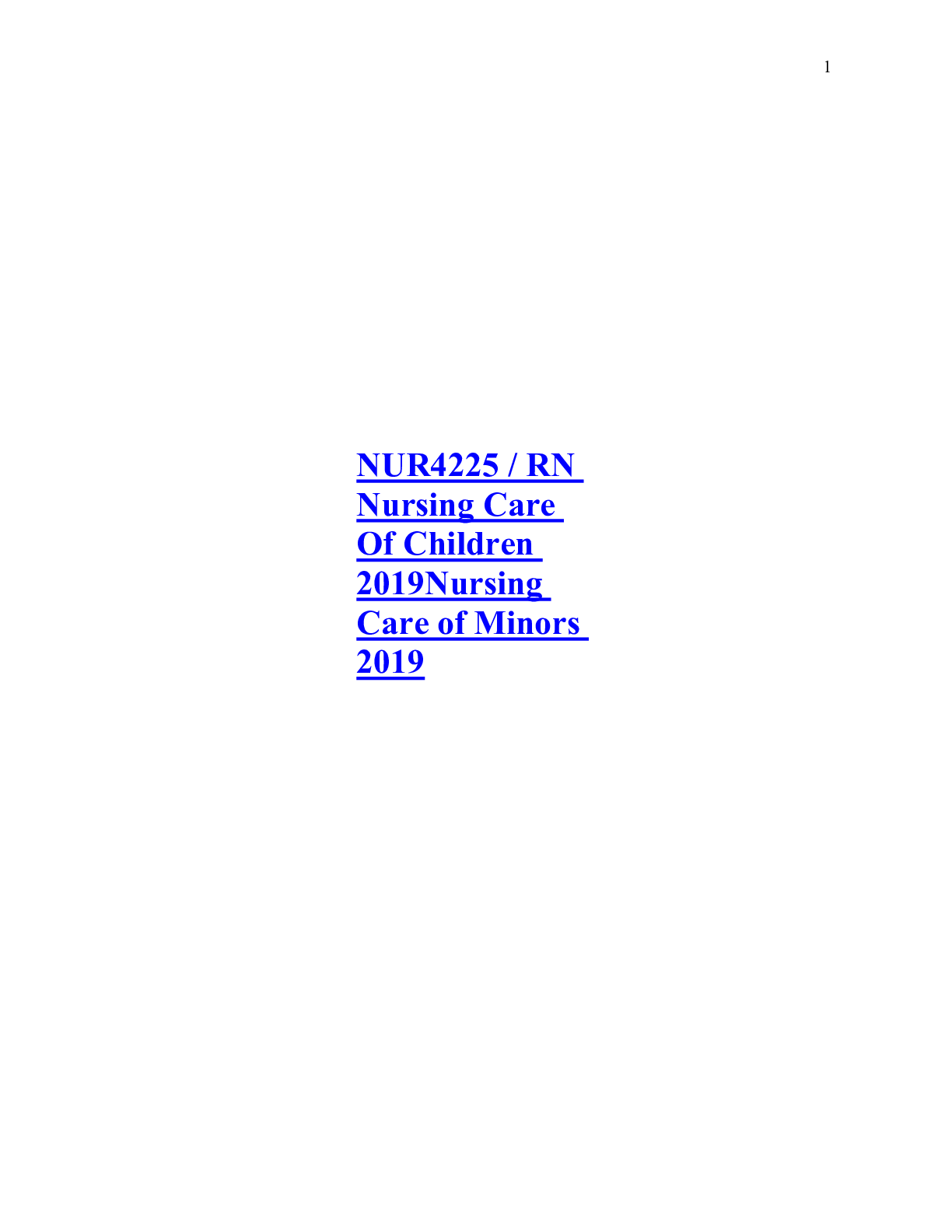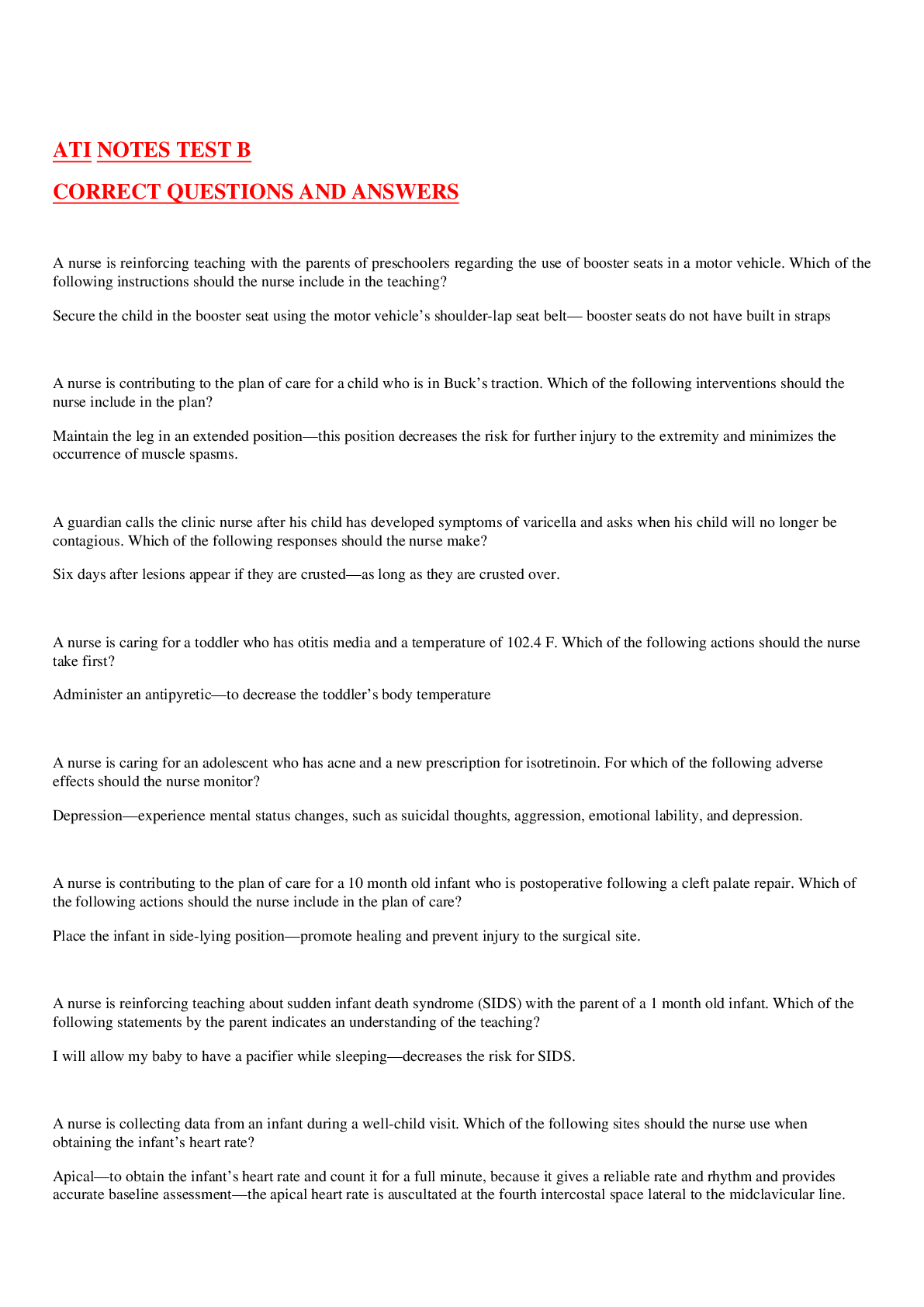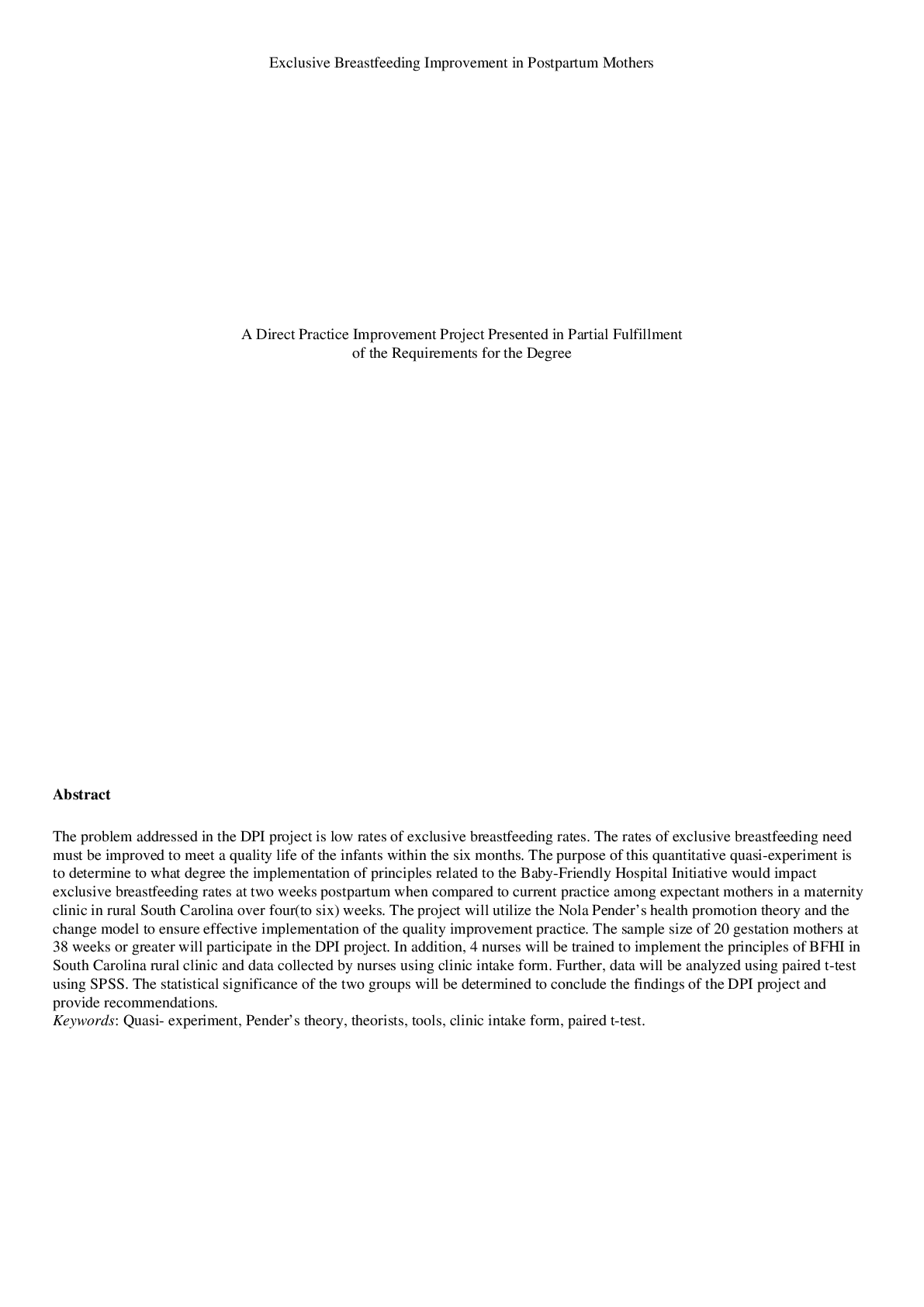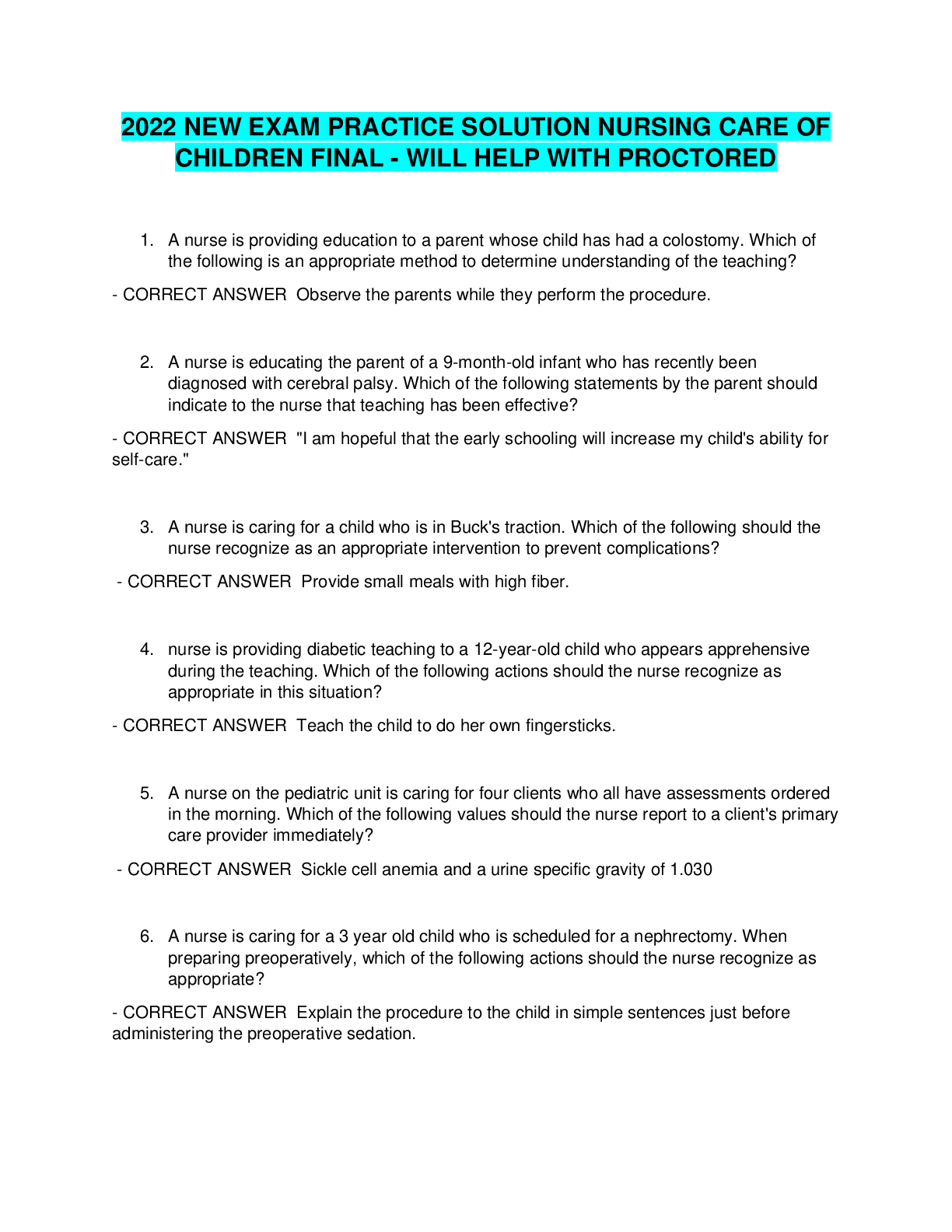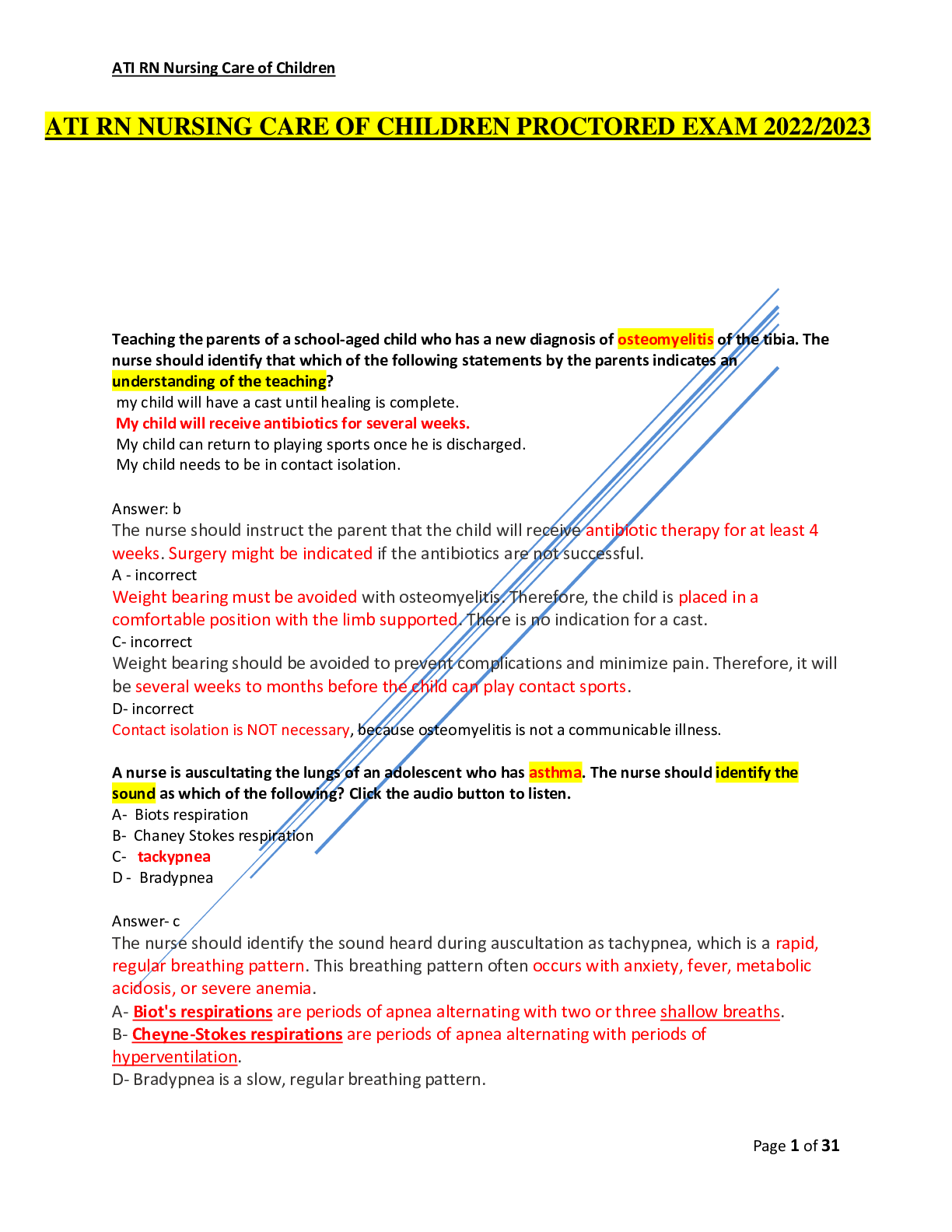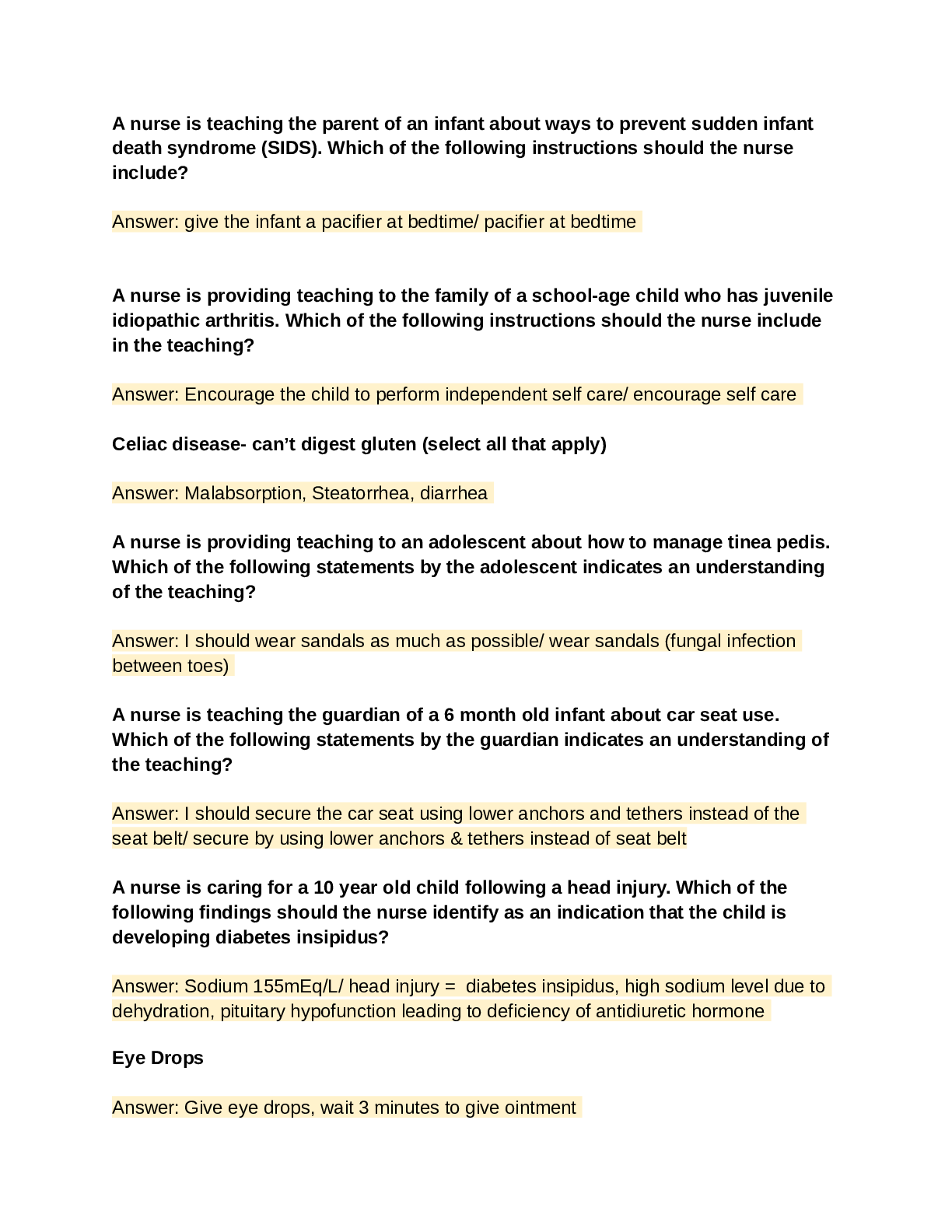Health Care > QUESTIONS & ANSWERS > ATI NURSING CARE OF CHILDREN AND CARDIOVASCULAR MANAGEMENT EXAM (45 QUESTIONS WITH CORRECT ANSWERS)G (All)
ATI NURSING CARE OF CHILDREN AND CARDIOVASCULAR MANAGEMENT EXAM (45 QUESTIONS WITH CORRECT ANSWERS)GRADED A
Document Content and Description Below
ATI NURSING CARE OF CHILDREN AND CARDIOVASCULAR MANAGEMENT EXAM (45 QUESTIONS WITH CORRECT ANSWERS)GRADED A 01 . The nurse completes an assessment of the 2-month-old infant during a well-child chec... kup. The nurse should report which finding to the HCP? A.Split 82 heart sound B.Apical heart rate of 140 bpm C.Oxygen saturation of 97% D.Femoral pulse 3+, brachial pulse 2+ ANSWER: A A.A split S2 sound may be abnormal if heard while respirations have paused. Because infants are unable to cooperate with the request to “hold a breath,” the nurse should report the split 82 sound to the I-ICP. B.An apical I-IR of 140 bpm is within the normal range for a 2-month-old infant. C.Oxygen saturation of 97% is reassuring of oxygenation and perfusion status and a normal finding. D.Femoral arteries are larger than brachial arteries and may have a higher pressure. A 3+ femoral pulse indicates that the pulse is bounding, whereas a 2+ brachial pulse indicates it is strong and normal. 02.The 6-month-old infant being seen in the clinic has an HR of 167 bpm, RR of 65 bpm, and Spo2 of 98%. The mother states the infant gets very tired with feedings, eating approximately two ounces every four hours. Which action should be the nurse’s priority? A.Check peripheral capillary refill time B.Auscultate for bowel sormds C.Auscultate for a heart murmur D.Attempt to bottle-feed the infant ANSWER: C A.The Spo2 is 98%, already suggesting that oxygenation and perfusion status is adequate; checking peripheral CRT is not priority. B.Assessment of bowel sounds is not priority; fluid volume overload is of greater concern. C.Fatigue, tachycardia, and tachypnea suggest fluid volume overload. Assessing for a heart murmur is priority to help identify the pathology of the underlying fluid overload. D.There is no need to attempt to feed the infant. The infant may not be hungry, thus giving inaccurate assessment data. [Show More]
Last updated: 1 year ago
Preview 1 out of 20 pages

Reviews( 0 )
Document information
Connected school, study & course
About the document
Uploaded On
Mar 09, 2022
Number of pages
20
Written in
Additional information
This document has been written for:
Uploaded
Mar 09, 2022
Downloads
0
Views
30



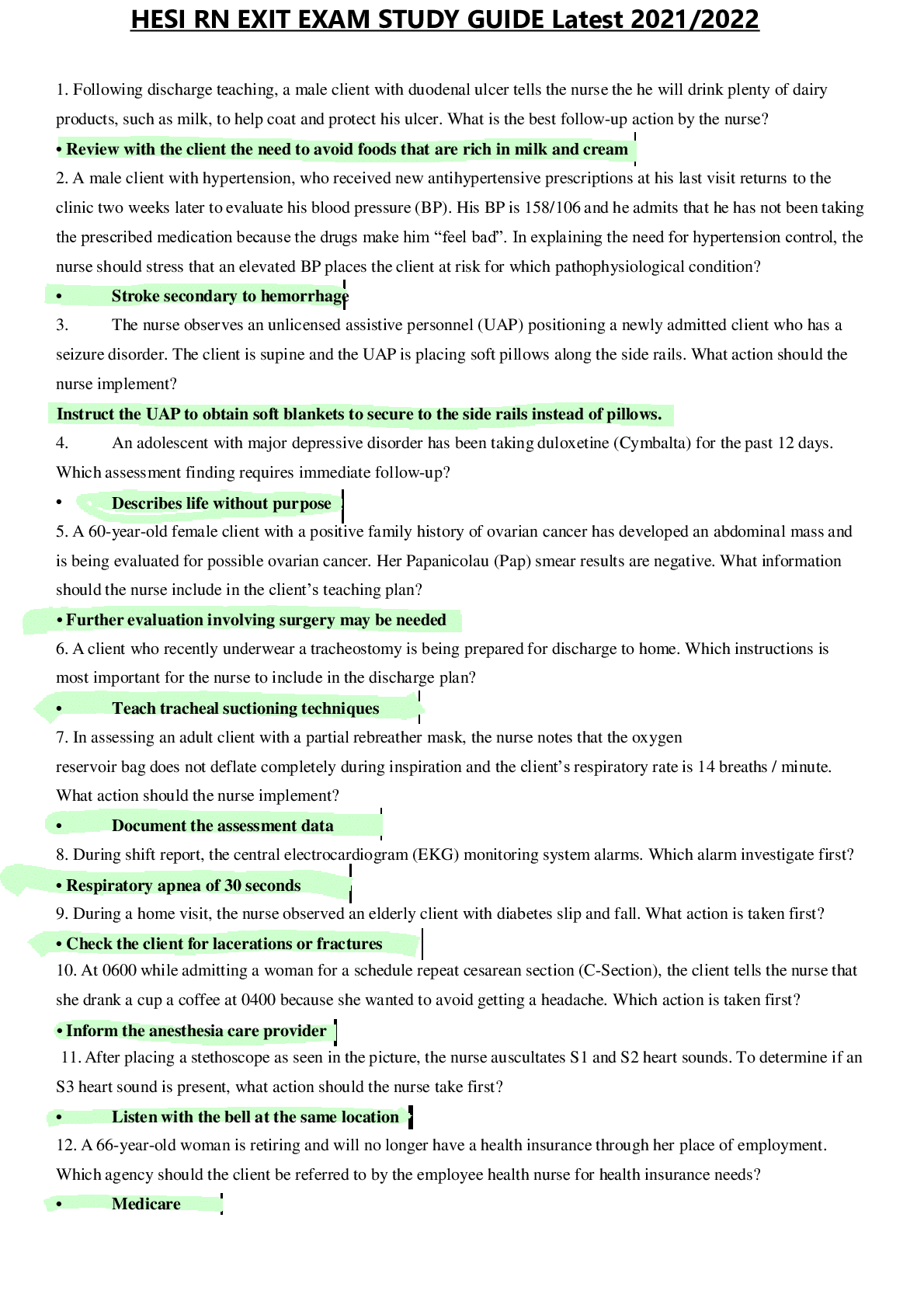
.png)
.png)
.png)


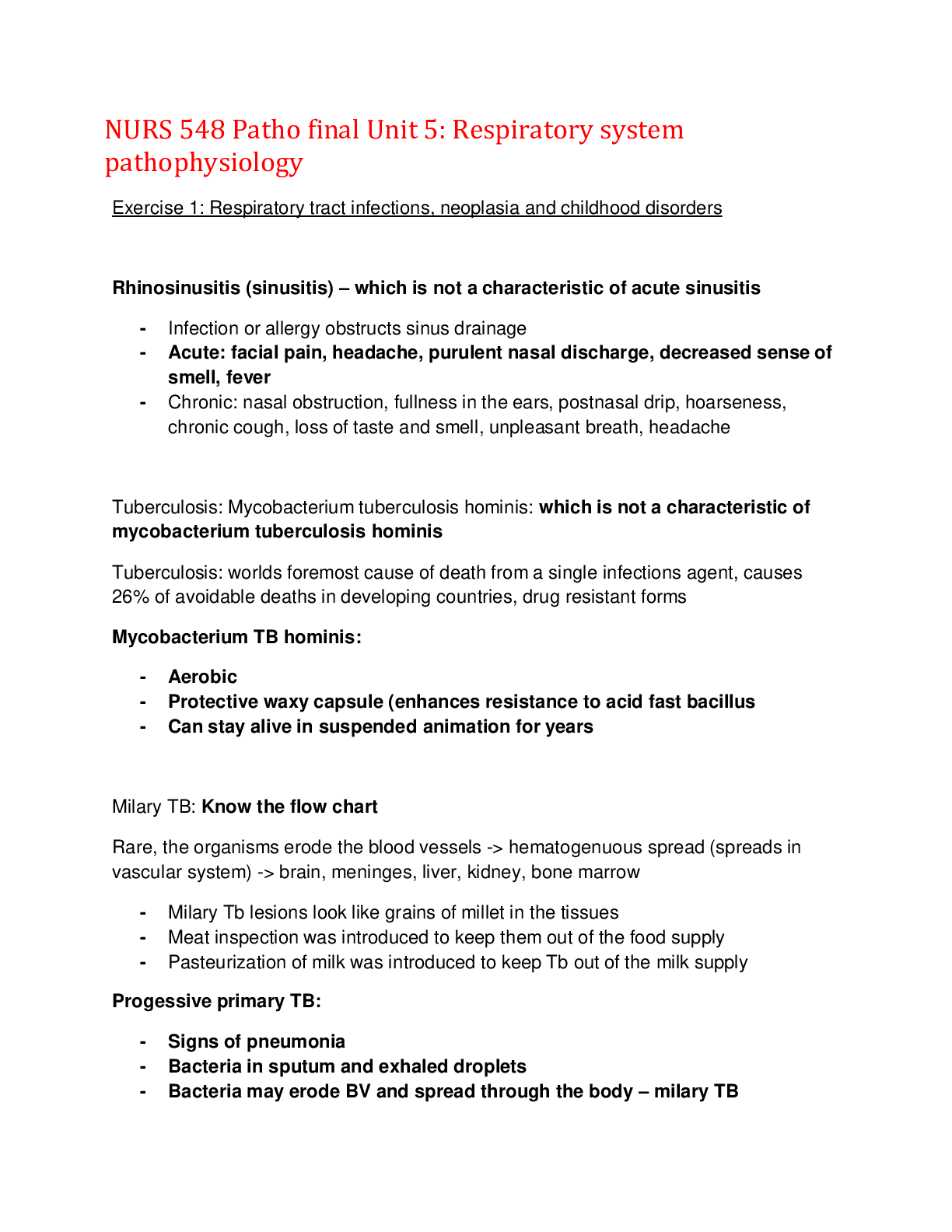
.png)
.png)
.png)
